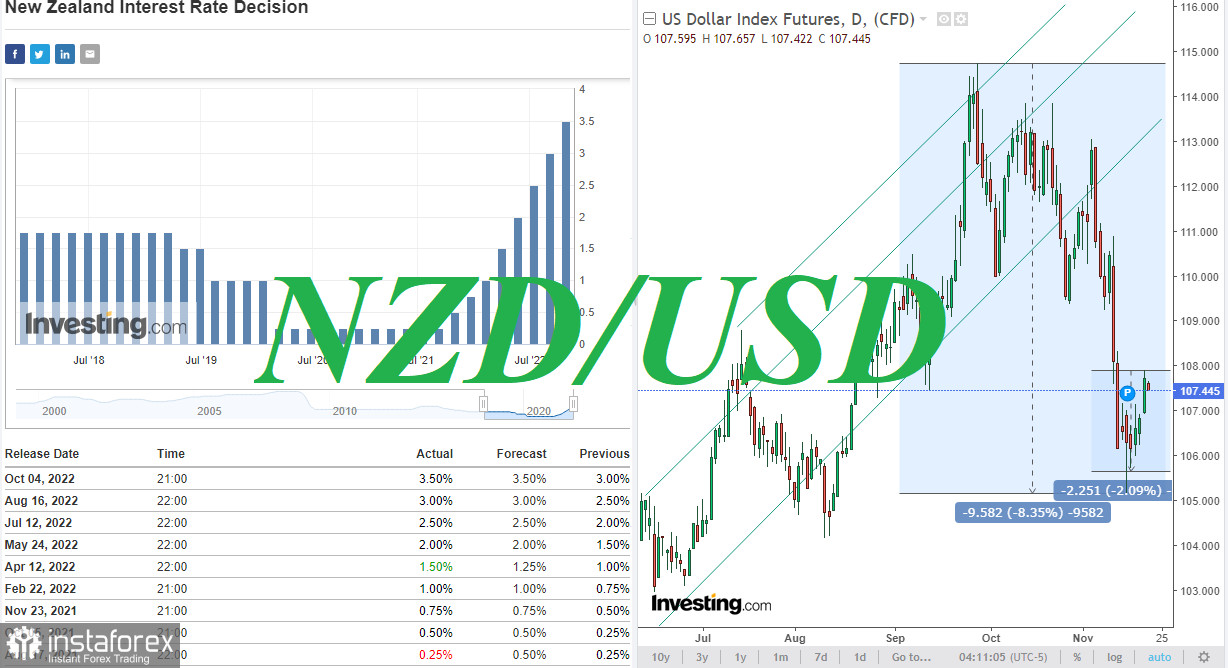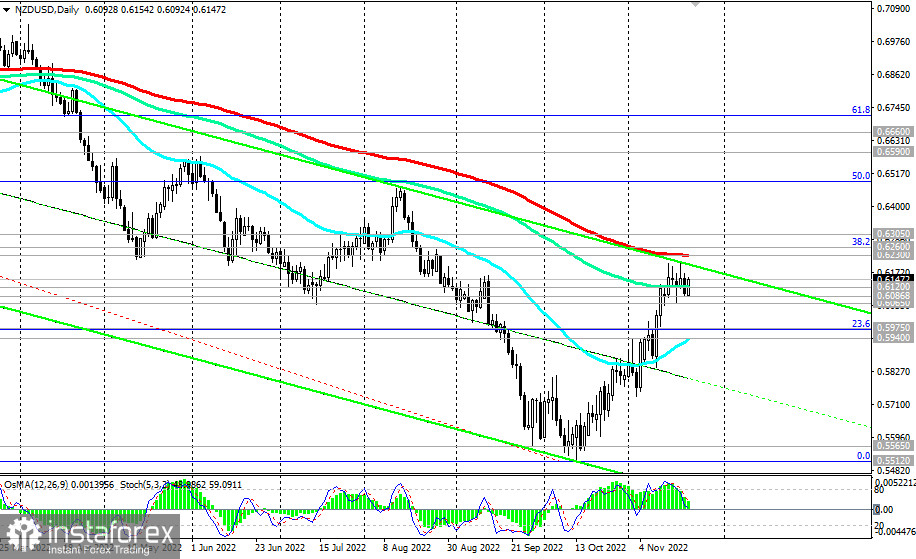After strengthening on Monday, the dollar is down again today. As of writing, the dollar index (DXY) futures are trading near 107.45, 26 points below yesterday's closing price and 44 points below yesterday's local high.

Obviously, neither the bulls nor the bears have enough confidence and strength to push the dollar in the direction they want. The inflation figures published this month are still fresh in the minds of market participants, which showed a slowdown in inflation in the United States. As we recall, the Consumer Price Index (CPI) declined in October from 8.2% to 7.7% YoY, stronger than the estimated decline to 8.0%. Core CPI adjusted to 6.3% versus the forecast of 6.5% YoY and 6.6% last month.
The bears' resolve to push the dollar further down has been tempered by recent statements by Fed officials that one month's data is no indication or guarantee that inflation has really begun to decline steadily and that interest rate hikes need to continue.
Specifically, St. Louis Fed President James Bullard said last week that further tightening was necessary, and he believes earlier measures have had only a marginal effect on inflation so far.
Now the market participants will wait for Wednesday's publication of the minutes of the Fed's November meeting, which may contain additional information on the monetary policy outlook. Sellers of the dollar expect that already at the December meeting, the Fed may increase not by 0.75% but by 0.50% and soften the rhetoric of their statements regarding future interest rate hikes.
Meanwhile, buyers of the dollar are counting on the Fed's continued super-tight monetary policy cycle: U.S. inflation is still well above the Fed's target of 2.0%.
Tomorrow, in addition to the Fed minutes, market participants will also be looking at reports from the U.S. Department of Labor with weekly jobless claims, S&P Global and its PMIs, and the U.S. Census Bureau with data on capital and durable goods orders. Durable goods production implies large investments. Growing orders for this category of goods signal that manufacturers will ramp up activity as orders are filled, and this is a positive for the USD. Figures are assumed to improve, with orders up +0.4% in October, which should support the USD.
The main focus today will be the Richmond Fed manufacturing activity index and the retail sales index from Redbook for the week of November 18. However, it is unlikely that they will strongly influence the dynamics of the dollar. The speeches of three Fed officials today at 16:00, 17:15 and 17:45 (GMT) are likely to set much volatility in the dollar.
But tomorrow, the volatility will sharply increase right at the beginning of Asian trading session, first of all for the New Zealand dollar and, accordingly, for the NZD/USD pair. This will be due to the publication of the interest rate decision of the RBNZ at 01:00 (GMT).
Following its meetings in October and November, the Reserve Bank of New Zealand (for the first time in 7 years) raised its key interest rate to 0.50% and then to 0.75%. In February and April 2022, the interest rate was raised again to 1.5% to ease inflation and curb rapidly rising house prices, and then to 2.0% and 2.5%. The current RBNZ interest rate is 3.5%. The RBNZ earlier said that the economy no longer needs the current level of monetary stimulus.
Economists believe that inflation in New Zealand will remain well above the RBNZ's target range of 1%–3%, at least through the end of 2023. The average inflation rate is expected to average 6.5% this year and then decline to 3.5% in 2023. In July, that forecast assumed 6.0% and 2.8%, respectively.
At this meeting, the RBNZ might raise the interest rate again by 0.75%, and it might also make an argument for further interest rate hikes at future meetings.

In the meantime, the NZD/USD pair continues to develop an upward correction, moving towards the key long-term resistance level of 0.6230. If the upward correction does not end near these levels, and there is no rebound, then a breakdown of the resistance levels of 0.6260, 0.6305 significantly increases the chances of NZD/USD returning to a long-term bullish trend.
 English
English 
 Русский
Русский Bahasa Indonesia
Bahasa Indonesia Bahasa Malay
Bahasa Malay ไทย
ไทย Español
Español Deutsch
Deutsch Български
Български Français
Français Tiếng Việt
Tiếng Việt 中文
中文 বাংলা
বাংলা हिन्दी
हिन्दी Čeština
Čeština Українська
Українська Română
Română

